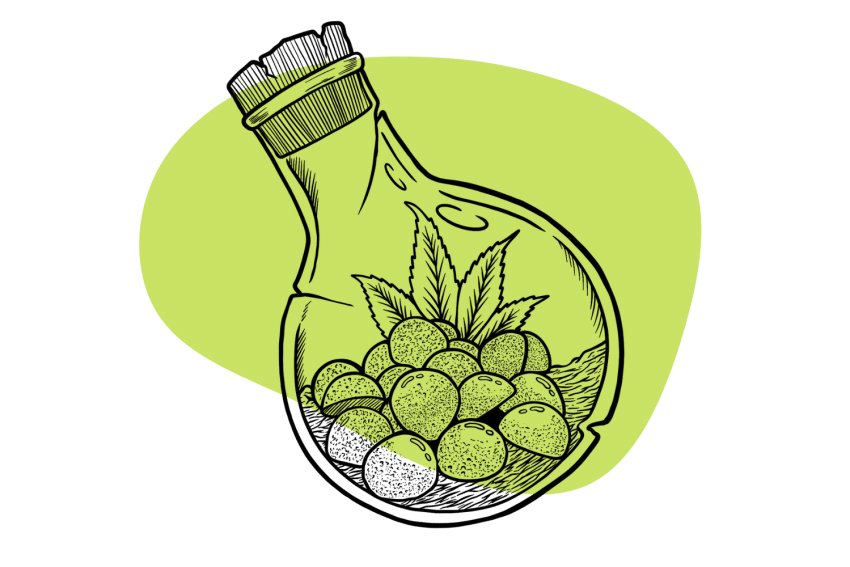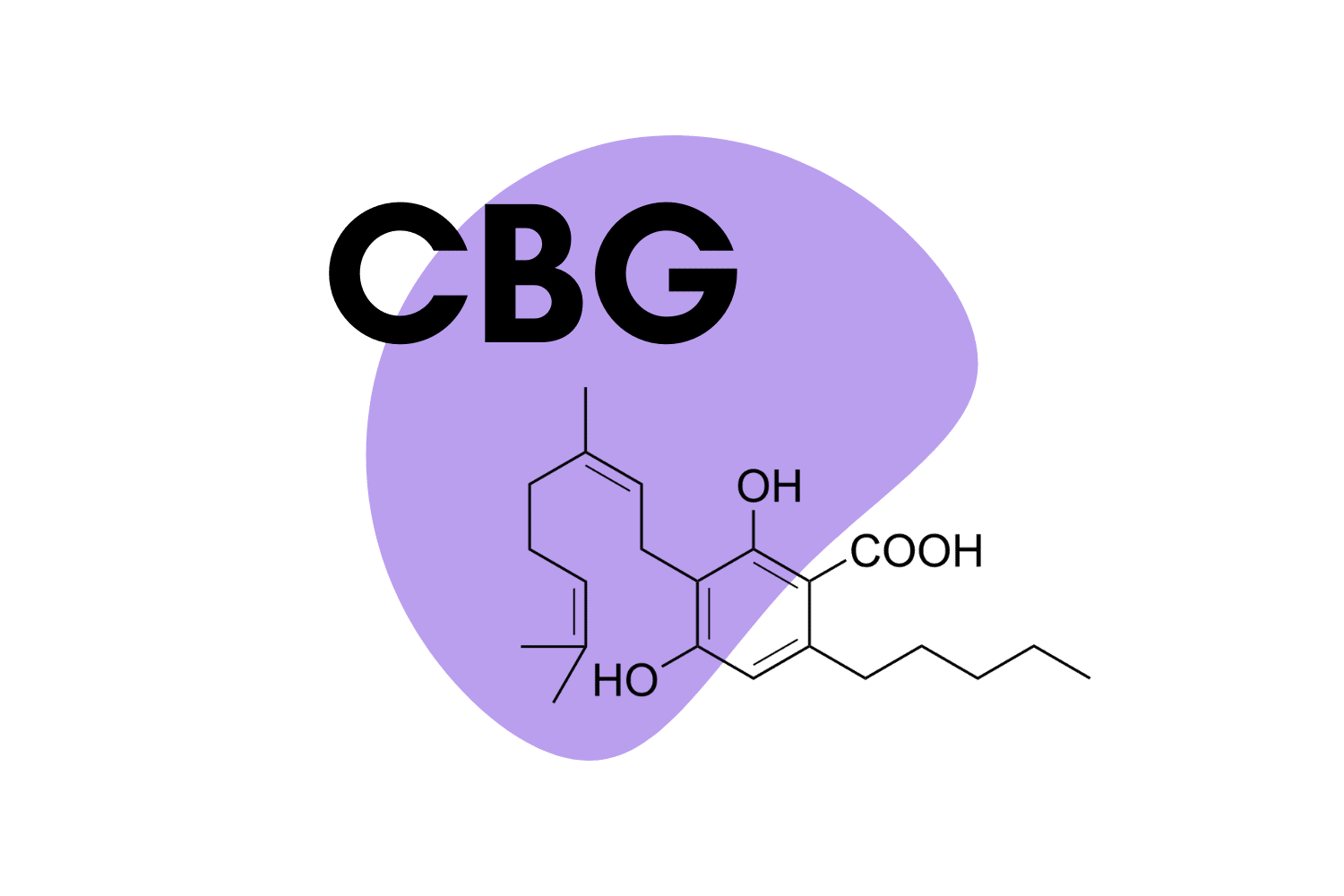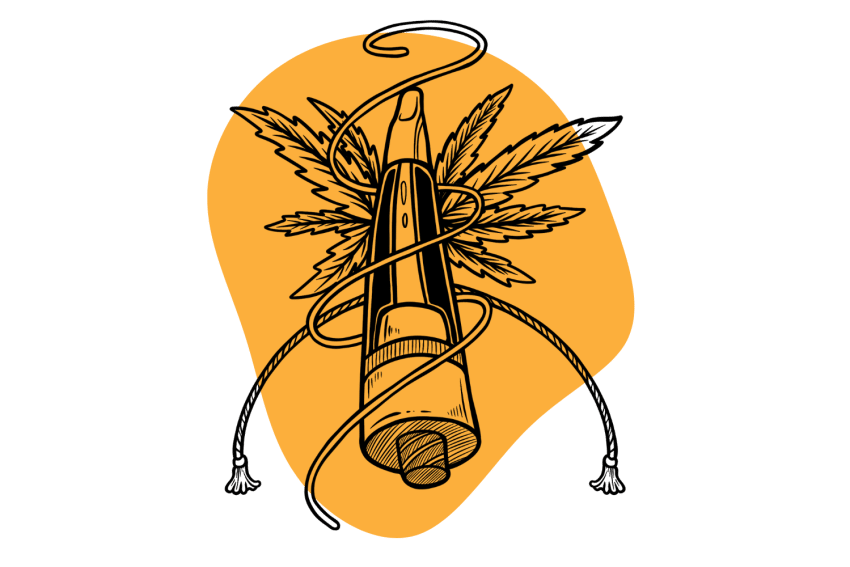Can Smoking Weed Cause Cancer?
Can smoking weed cause cancer? It’s a reasonable hypothesis considering that marijuana smoke contains known carcinogens. But how do the anti-cancer effects of cannabis play in?
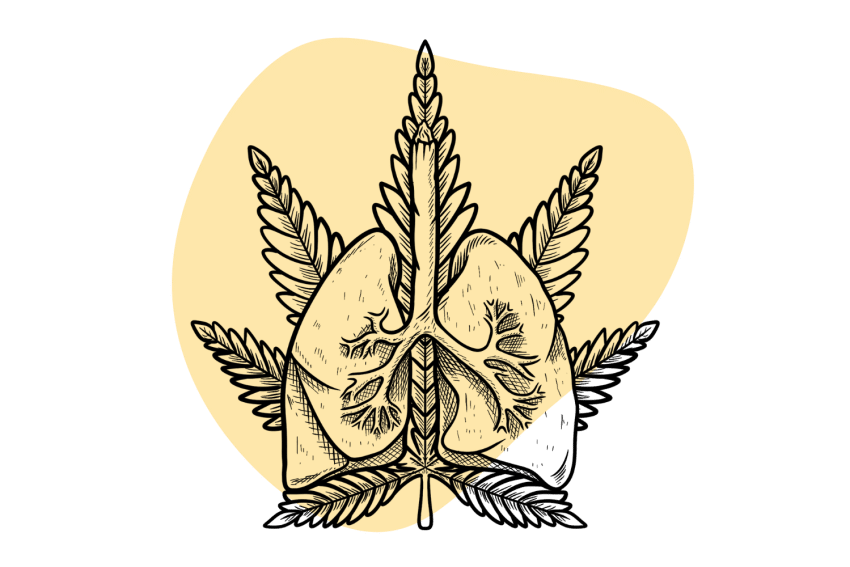
The short answer is — it depends on how much you smoke.
This question isn’t as easy to answer as you might think. There are a lot of confounding factors, and research hasn’t been very clear on this over the past couple of decades.
Here’s why this question is so hard to answer:
- Marijuana smoke contains carcinogens that form during combustion — but it also contains compounds shown to combat malignant cells and may even prevent the formation of cancer.
- Smoking weed causes micro-inflammation in the lungs — but it also provides anti-inflammatory effects that can protect the lungs or other tissues in the body.
- The majority of research on marijuana has been conducted without controlling for confounding factors — for example; many studies failed to separate marijuana-only smokers from marijuana-and-tobacco smokers when assessing risk.
- The amount of carcinogens from marijuana smoke is actually lower than that from tobacco — The myth stating otherwise comes from manipulated conclusions from one study published in the 1980s.
Let’s elaborate on this because new research provides deeper insight into the subject of smoking weed and cancer.
What The Research Says: Marijuana & Cancer
The problem with marijuana research is that it has been listed as a Schedule I drug since 1971.
For many decades, researchers weren’t allowed to study cannabis. This halted research until the early 2000s. Even when research picked back up again, it was very slow-moving. It’s only within the past decade that cannabis research has made significant progress.
The problem is that it takes decades to properly assess the cancer risk of any given compound. The studies we need to truly answer this question should have started at least 10 or 15 years ago, but 20, 30, or 40 are even better.
Longitudinal studies are the best for assessing this question. These studies follow people over the course of many years, sending periodic surveys, conducting health checks, and monitoring their intake of the substance in question. This data is then used to correlate how many of them received a cancer diagnosis and compare that to how often they used cannabis.
Because research has been stifled for so long, these studies don’t yet exist (though there are a few in progress as we speak).
Here’s what the research says so far:
Marijuana & Lung Function
A 2012 study including 5115 participants, including marijuana smokers, tobacco smokers, and non-smokers, concluded that smoking marijuana (even regularly) doesn’t impair lung function. In fact, those who smoked pure marijuana were at a lower risk of developing cardiopulmonary issues than both tobacco smokers and non-smokers [1].
Although chronic, heavy weed smokers had worse scores on spirometry (lung function) tests, the authors considered them “insignificant.”
In 2023, another study confirmed the above findings, claiming that smoking marijuana for over 9 years doesn’t increase the risk of emphysema and other lung disorders — unlike smoking tobacco [2].
In contrast, a widely published 2022 study found something completely different [3]. They found that smoking marijuana increased the risk of lung damage.
Maybe, just maybe, that’s because the research team threw marijuana users with those who co-used both substances into the same bucket.
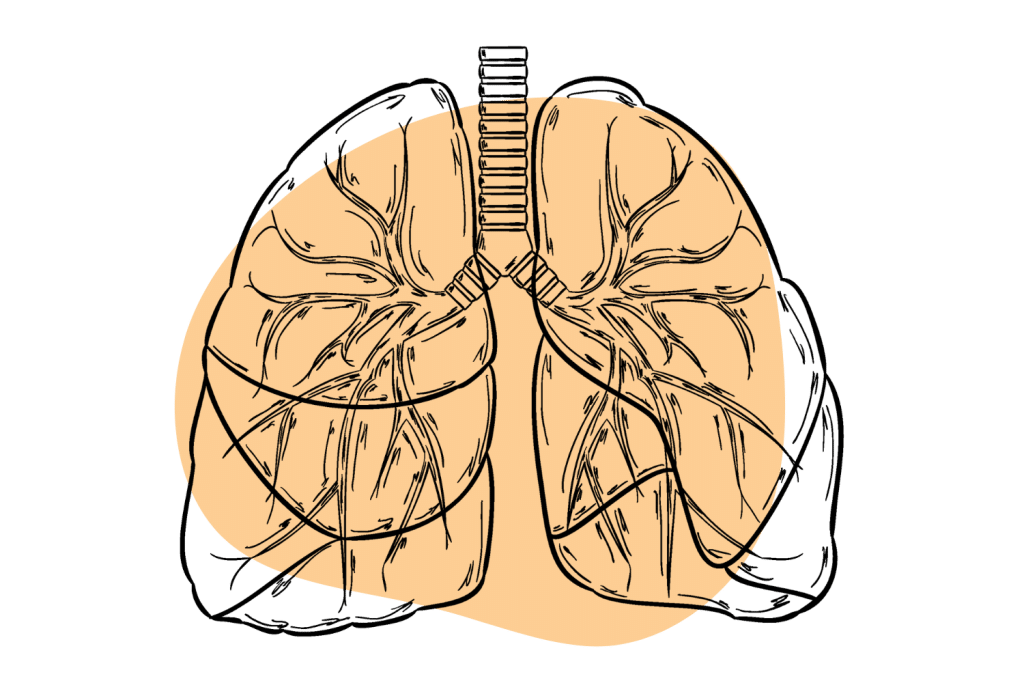
Marijuana & Throat Cancer
A population-based case-control study involving 407 participants diagnosed with oral cancers and 615 healthy controls found “no association between cannabis use and incidence of oral cancer, regardless of how long, how much, and how often individuals have used it” [5].
There’s virtually no other official research in this area published within the last 20 years. There was some research before this, but the study criteria had so many problems it’s impossible to actually draw any conclusions.
Marijuana & Lung Cancer
In a 1997 retrospective study, researchers analyzed the relationship of marijuana use to cancer risk in 65,171 men and women aged 15-49 in California [6].
Their findings suggested no association between smoking cannabis and increased risks of developing tobacco-related cancers of the lung and upper aerodigestive tract.
Interestingly, they found zero cancer cases in men and women who smoked only marijuana.
A review of studies published in The Lancet reached similar conclusions. The authors concluded that “results of cohort studies have not revealed an increased risk of tobacco-related cancers among marijuana smokers” [7].
In 2005, Hall and colleagues yielded mirroring results, stating, “There is a conspicuous lack of evidence on the association between cannabis smoking and lung cancers” [8].
Finally, a 2006 study including 2000 participants compared the risk of respiratory cancers in marijuana and tobacco smokers, finding that those who smoked weed had twice as low of a risk of having cancer compared to cigarette smokers [9].
The heaviest users had a lifetime record of 22,000 joints — and their risk of cancer wasn’t higher than that of “lightweight” users.

Marijuana & Other Cancers
Whether smoking weed causes respiratory cancers is up for debate, but what about other types of cancer?
In a 1997 retrospective cohort study of 65,171 men and women, the research team found that “ever” and “current use” of cannabis wasn’t associated with increased risk of colon, lung, skin, breast, cervix, and prostate cancer [10].
A 2005 review of case studies by Hashibe and colleagues also didn’t notice evidence of a strong link between cannabis use and anal or penile cancer [11].
Another cohort study by University of Hawaii researchers tested whether consuming cannabis at least once per month increased the risk of brain cancer. After adjusting for sex, race, education, alcohol consumption, and coffee intake, they found no association between cannabis consumption and a higher risk of cancer [12].
Interestingly, drinking more than 7 cups of coffee daily increased that risk by 70 percent.
Weed Smoke vs. Tobacco Smoke
The link between tobacco smoke and cancer is obvious and extensively documented. In contrast, high-quality studies examining the same relation, but with cannabis, didn’t replicate these results.
Both cannabis and tobacco smoke contain a high number of carcinogens released upon combustion. By observing a weed smoker and a cigarette smoker, you could conclude that both people are at a similar risk of cancer.
But as you know from the above section, that’s not the case.
Cannabis smoke is different from tobacco smoke. It contains over 100 cannabinoids like THC and CBD. These are not only non-carcinogenic but also demonstrate anti-cancer, antioxidant, and anti-inflammatory properties.
This may explain why separating marijuana smokers from those who co-used both substances yielded drastically different results.
It’s difficult to find a list of tobacco smoke constituents — but two different estimates point to 62 or 69 specific compounds [13,14].

A study from 2005 titled “Cannabis and and tobacco smoke are not equally carcinogenic” noted that a specific type of smoke-based carcinogen called polycyclic aromatic hydrocarbons was found in higher concentrations than in tobacco [15]. However, the study also pointed out that the presence of THC and other cannabinoids was likely to combat the carcinogenic qualities of these compounds, while the nicotine in tobacco likely enhanced it.
The most recent study, published in 2008, found that the total levels of carcinogens were consistently lower in marijuana smoke compared to tobacco [16].
To wrap it up, the latest fact sheet from the National Institute on Drug Abuse says, “it is not yet known whether marijuana smoking contributes to (the) risk for lung cancer.”
Robert Melamede, the author of the 2005 study mentioned earlier, states that:
“It should be noted that with the development of vaporizers, that use the respiratory route for the delivery of carcinogen-free cannabis vapors, the carcinogenic potential of smoked cannabis has been largely eliminated.”
Can Smoking Weed Help with Cancer?
Cannabis contains over 100 different cannabinoids, the active, drug-like compounds that interact with the endocannabinoid system (ECS).
The ECS is the master regulatory network in all mammals, constantly working to maintain a balance between other systems and organs.
It controls essential biological processes, such as memory, mood, pain perception, anxiety, immune response, body temperature control, appetite, sleep, fertility, and the life cycle of cells.
The endocannabinoid system is also believed to control the growth and spread of cancer.
Although cannabinoids haven’t been approved as a cancer treatment, two FDA-approved drugs – Nabilone and Cesamet — are currently being prescribed to treat nausea, pain, and loss of appetite in cancer patients after chemotherapy.
Here’s how it works.
Marijuana has complex effects on cancer, attacking virtually every aspect of its life cycle.
In the latest review of the literature published in 2022 in the Nature Journal, the authors admit that “drugs that target the endocannabinoid system are of interest as pharmacological options to combat cancer and to improve the life quality of cancer patients” [17].
There’s considerable evidence that THC, CBD, and other cannabinoids can:
- Inhibit tumor cell proliferation
- Block tumor invasion and metastasis
- Combat angiogenesis and chemoresistance
- Induce apoptosis and autophagy
Chemoresistance, apoptosis, and autophagy are particularly important for cannabis as a potential cancer treatment.
Weed increases the cytotoxicity of conventional cancer treatments, which may increase their effectiveness. At the same time, it’s believed to protect healthy cells against oxidative damage caused by these destructive methods of treatment.
Apoptosis refers to programmed cell death. This function assists the body in cleansing itself from flawed cells, which is further stimulated by autophagy — your system’s inner cell exchange that the body requires to spur up healing processes.

Can Weed Complicate Some Cancer Treatments?
Yes, there’s some evidence that smoking weed may complicate certain cancer treatments, specifically immunotherapy.
A 2019 observational study suggests that cannabis may impair the efficacy of immunotherapy, which is a standard treatment against many aggressive tumors [18].
Immunotherapy works by stimulating the immune system to kill cancer cells. In low and moderate doses, cannabinoids have immunomodulatory effects. They actually enhance the immune system and prevent it from attacking these cells.
Related: Can You Microdose Marijuana?
The immunomodulatory effect can be effective in treating autoimmune diseases, but it may interfere with immunotherapy.
In the said study, patients who didn’t receive cannabis were 3.17 times more likely to respond to the treatment.
References
- Pletcher MJ, Vittinghoff E, Kalhan R, et al. Association Between Marijuana Exposure and Pulmonary Function Over 20 Years. JAMA. 2012;307(2):173–181.
- Najman, J. M., Bell, S., Williams, G. M., Clavarino, A. M., Scott, J. G., McGee, T. R., & Mamun, A. A. (2023). Do tobacco and cannabis use and co-use predict lung function: A longitudinal study. Respiratory medicine, 208, 107124. https://doi.org/10.1016/j.rmed.2023.107124
- Murtha, L., Sathiadoss, P., Salameh, J. P., Mcinnes, M. D. F., & Revah, G. (2023). Chest CT Findings in Marijuana Smokers. Radiology, 307(1), e212611. https://doi.org/10.1148/radiol.212611
- Ghasemiesfe, M., Barrow, B., Leonard, S., Keyhani, S., & Korenstein, D. (2019). Association Between Marijuana Use and Risk of Cancer: A Systematic Review and Meta-analysis. JAMA Network open, 2(11), e1916318. https://doi.org/10.1001/jamanetworkopen.2019.16318
- Rosenblatt, K. A., Daling, J. R., Chen, C., Sherman, K. J., & Schwartz, S. M. (2004). Marijuana use and risk of oral squamous cell carcinoma. Cancer Research, 64(11), 4049–4054. https://doi.org/10.1158/0008-5472.CAN-03-3425
- Sidney, S., Quesenberry, C. P., Jr, Friedman, G. D., & Tekawa, I. S. (1997). Marijuana use and cancer incidence (California, United States). Cancer causes & control: CCC, 8(5), 722–728. https://doi.org/10.1023/a:1018427320658
- Boffetta, P., & Hashibe, M. (2006). Alcohol and cancer. The Lancet. Oncology, 7(2), 149–156. https://doi.org/10.1016/S1470-2045(06)70577-0
- Stolick, M. (2009). Otherwise Law-Abiding Citizens: A Scientific and Moral Assessment of Cannabis Use. Lexington Books, 2009.
- American Thoracic Society. (2006). Study Finds No Link Between Marijuana Use and Lung Cancer. Science Daily. Retrieved from: https://www.sciencedaily.com/releases/2006/05/060526083353.htm
- Ghasemiesfe, M., Barrow, B., Leonard, S., Keyhani, S., & Korenstein, D. (2019). Association Between Marijuana Use and Risk of Cancer: A Systematic Review and Meta-analysis. JAMA Network open, 2(11), e1916318. https://doi.org/10.1001/jamanetworkopen.2019.16318
- Hashibe, M., Straif, K., Tashkin, D. P., Morgenstern, H., Greenland, S., & Zhang, Z. F. (2005). Epidemiologic review of marijuana use and cancer risk. Alcohol (Fayetteville, N.Y.), 35(3), 265–275. https://doi.org/10.1016/j.alcohol.2005.04.008
- Efird, J.T., Friedman, G.D., Sidney, S., et al. The Risk for Malignant Primary Adult-Onset Glioma in a Large, Multiethnic, Managed-Care Cohort: Cigarette Smoking and Other Lifestyle Behaviors. J Neurooncol 68, 57–69 (2004). https://doi.org/10.1023/B:NEON.0000024746.87666.ed
- National Cancer Institute. Harms of Cigarette Smoking and the Benefits of Quitting. Cancer.gov. Retrieved from: https://www.cancer.gov/about-cancer/causes-prevention/risk/tobacco/cessation-fact-sheet
- Rockville, MD. (2010). How Tobacco Smoke Causes Disease: The Biology and Behavioral Basis for Smoking-Attributable Disease. U.S. Department of Health and Human Services. Retrieved from: https://www.ncbi.nlm.nih.gov/books/NBK53017/pdf/Bookshelf_NBK53017.pdf
- Melamede R. (2005). Cannabis and tobacco smoke are not equally carcinogenic. Harm reduction journal, 2, 21. https://doi.org/10.1186/1477-7517-2-21
- Moir, D., Rickert, W. S., Levasseur, G., Larose, Y., Maertens, R., White, P., & Desjardins, S. (2008). A comparison of mainstream and sidestream marijuana and tobacco cigarette smoke produced under two machine smoking conditions. Chemical research in toxicology, 21(2), 494–502. https://doi.org/10.1021/tx700275p
- Hinz, B., & Ramer, R. (2022). Cannabinoids as anti-cancer drugs: current status of preclinical research. British journal of cancer, 127(1), 1–13. https://doi.org/10.1038/s41416-022-01727-4
- Taha, T., Meiri, D., Talhamy, S., Wollner, M., Peer, A., & Bar-Sela, G. (2019). Cannabis Impacts Tumor Response Rate to Nivolumab in Patients with Advanced Malignancies. The oncologist, 24(4), 549–554. https://doi.org/10.1634/theoncologist.2018-0383



